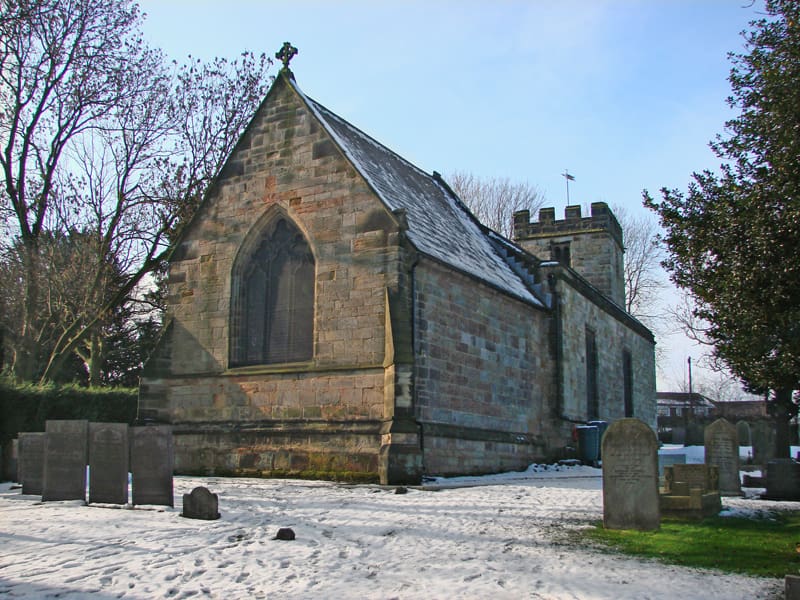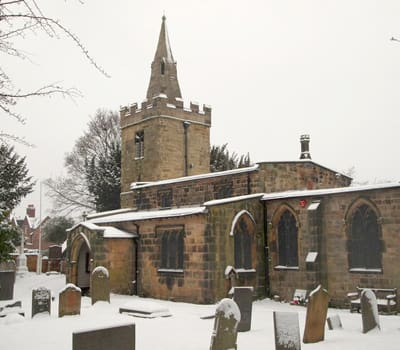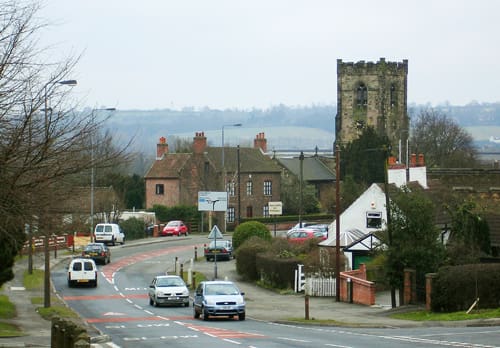The people of Ilkeston have seen a succession of Lords of the Manor stretching back to the Conquest. In the four centuries from Domesday of 1086 through to the Battle of Bosworth in 1485, the manor was held by related members of just a few families, passing from one generation to the next, either through blood ties or by marriage.
In 1086 the manor of Ilkeston (spelt as ‘Tilchestune’ in Domesday) was part of the land of the Gilbert of Ghent, a Flemish Knight, no doubt handed to him as reward for his support for William Duke of Normandy’s invasion and subsequent conquest of Saxon England in 1066.
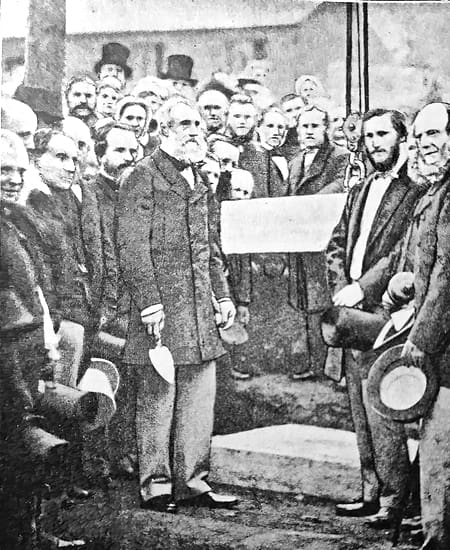
Lord of the Manor, laying the foundation stone for the Town Hall, 1866.
Gilbert held land in 15 other English counties, from Berkshire northwards and according to Domesday, Ilkeston was held for him by someone by the name of Malgar, possibly one of his vassals, in return for military service. Following Gilbert’s death in 1094 his estates became the property of his son and heir, Walter de Ghent and therefore it is likely that Ilkeston likewise passed into his hands.
Walter died in or around 1135. Whether through marriage, blood ties, or other means, it appears that the manor passed into the hands of the Muskham family. During the rest of the 12th century, the manor passed from one Robert de Muskham (said to be the founder of St.Mary’s) to his son Hugh. From Hugh it then passed to his own son – another Robert. Some accounts once claimed that this Robert died without an heir and the manor passed to Isabell, the daughter and heir of his brother Hugh. However, The Henry III Fine Rolls Project (www.finerollshenry3.org.uk) has published images of the original documents along with their English translations, including an entry from July 3rd 1219 which clearly states that Isabell was in fact the daughter of Robert de Muskham
Either way, through Isabell’s marriage to Ralph de Gresley, the manor became the possession of her husband. In or around 1228, Ralph, said at the time to be ‘languid’, passed possession of the manor into the hands of his daughter Agnes and therefore into the hands of her husband – Hugh Fitz Ralph. It was this Hugh who was granted Ilkeston’s market charter in 1252.
Although Hugh Fitz Ralph and Agnes produced at least two sons, named as far as we know as Hugh and Ralph, neither survived their father to inherit the manor. It was therefore left to Eustacia, the daughter and sole surviving heir of Hugh Fitz Ralph’s deceased son Ralph and his wife Joan to inherit the manor of Ilkeston.
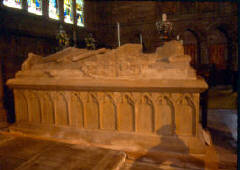
Ilkeston St.Mary’s: The tomb of Nicholas
de Cantelupe, husband of Eustacia
(Photograph Stephen Flinders)
Her marriage to Nicholas de Cantelupe, a member of one of the most powerful and illustrious families at the time, saw the manor pass into the hands of yet another family.
From Nicholas and Eustacia’s marriage came forth a succession of Cantelupes who would hold the manor for the next 90 years. The death in 1375/6 of their great great grandson William, brought an end to the family’s possession of Ilkeston.
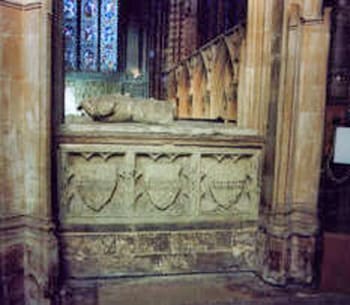
With William having no heir, a number of inquisitions were held to ascertain as to who should rightly inherit the manor. It was finally agreed that William’s distant cousin, William la Zouche was rightful heir.

Around 700 years ago, one of the ladies of the Cantelupe family went riding around the Kirk Hallam area. This bronze pendant fell from the horses harness and was lost.
The pendant, though lacking the original lacquered colours, still bears the faint impression of the family’s arms.
(On display at Erewash Museum)
After the Battle of Bosworth on August 22nd 1485, and having effectively ‘backed the wrong side’, the Zouches were dispossessed of their lands and the manor sold by Henry VII, the victor of Bosworth, to his ally Sir John Savage. This finally brought this unbroken line to an end.
For the next 123 years the manor remained the property of the Savage family, until in 1608 when it was sold to Sir John Manners, ancestor of the present Duke of Rutland, who is still titular Lord of the Manor today.
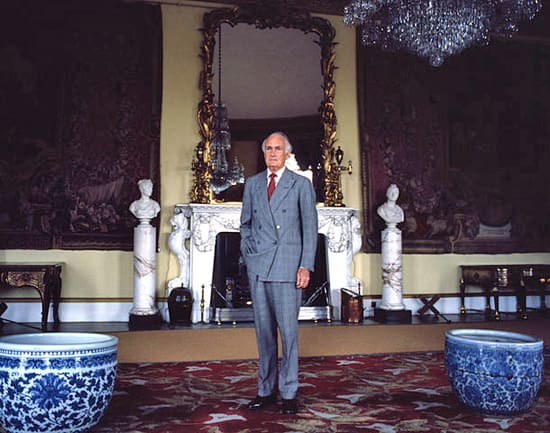
Portrait by Allan Warren (Wikimedia Commons)
Time Line
1066
Norman invasion and conquest of England.

Ghent
1067
Gilbert of Ghent present at the siege of York.
1086
Domesday records that Gilbert holds Tilchestune (Ilkeston).
1094
Death of Gilbert of Ghent.
1139
Death of Walter of Ghent, Gilbert’s son and heir.

Muskham
1139 (circa)
Manor passes into the hands of Robert de Muskham.

Gresley
1216 (circa)
Manor becomes the property of Ralph of Gresley.
1228 (circa)
Manor passes to Ralph’s daughter Agnes, the wife of Hugh Fitz Ralph of Selston.

Canteloupe
1252
King Henry III grants market charter to Hugh Fitz Ralph.
1261 (circa)
Marriage of Eustacia to Nicholas de Cantelupe.
1262
Birth of William, son of Nicholas and Eustacia.
1265 (circa)
Death of Nicholas de Cantelupe (buried at Ilkeston St Mary’s).
1268
Marriage of Eustacia to William de Ros of Ingmanthorpe.
1290 (circa)
Death of William(I) de Cantelupe’s first wife Matilda.
1292
Marriage of William(I) to Eva de Boltby.
1293
Birth of William(II), son of William
and Eva.
1299
William(II) called to Parliament by King Edward I.
1300 (circa)
Birth of Nicholas(I), son of William and Eva.
1308
Death of William(II) (buried at Ilkeston St.Mary’s).
1321
Death of William(III), son of William(II) and Eva.
1321
William’s younger brother Nicholas(I) inherits manor of Ilkeston and other estates.
1322
Nicholas(I) accompanies King Edward II on campaign in Scotland.
1326
Birth of William(IV), son of Nicholas(I) and his first wife Typhane/Typhonia.
1341
Following the death of Typhane (date unknown), Nicholas(I) marries Joan.
1346
Nicholas(I) present at the Battle of Cressy.
1355
Death of Nicholas(I) (buried at Lincoln Cathedral). His estates were left to his two grandsons, Nicholas(II) and William(VI), sons of William(V)
1358
Joan, widow of Nicholas(I), founds the Cantelupe Chantry at Lincoln Cathedral.
1371
Death at Avignon of Nicholas(II), eldest son of William(V) and grandson of Nicholas(I)
1375
Death of William(VI), younger son of William(V) and brother of Nicholas(II)
William died in mysterious circumstances. He was said to have been murdered in his bed and his body found some distance away. Several members of his household were implicated, including his wife Maud.
Two members of his household were condemned. Maud was acquitted through the influence of Sir Thomas de Kydale, Sheriff of Lincoln, whom she married shortly after, thus adding much mystery to the circumstances surrounding William’s death.
1376
With the death of both Nicholas(II) and William(VI), neither of whom produced heirs, the estates revert to their father William(V), who died shortly after his two sons.

Zouche
1378
With no direct heirs, the manor passed into the hands of a distant cousin, William la Zouche. He was a descendant of William de Cantelupe, brother of Nicholas(I).
1485
Battle of Bosworth and subsequent death of John la Zouche, great, great, grandson of the above William la Zouche.

Savage
1485
King Henry VII, the victor of Bosworth sells the manor to Sir John Savage(I).
1492
Death of Sir John Savage(I) at the siege of Boulogne. His son and heir, John Savage(II), inherits the manor.
1516
John Savage(II) and his son John Savage(III) are accused of involvement in the murder of John Pauncefote, Justice of the Peace for Gloucester. They are pardoned on condition they pay a fine of £2666 13s 4d.
1526
Death of Sir John Savage(II).
1528
Death of Sir John Savage(III). Following his death, his widow Elizabeth, married William Brereton. William becomes the guardian of Sir John Savage’s estates and of his son and heir, John Savage(IV), who was only a child at the time of his father’s death.
1547
Sir John Savage(IV) is given leave to occupy his rightful inheritances, including the manor of Ilkeston. However, during the mid to late 1580s, Sir John Savage(IV) began disposing of some of his estates. His son John Savage(V), appealed to his uncle, Sir John Manners(I), for help in preventing this process.
1570
Death of Elizabeth Savage, wife of Sir John Savage(IV) and the sister of Sir John Manners(I).
1597
Death of Sir John Savage(IV). His son, John Savage(V), never became lord of the manor as it is probable that negotiations to sell the manor of Ilkeston to Sir John Manners(I) began some time before this date.
1608
Sir Thomas Savage(VI), grandson of Sir John Savage(IV), completed the sale of the manor to the Sir John Manners(I). He become the new Lord of the Manor.

Manners
1611
Death of Sir John Manners(I). Buried at Bakewell, Derbyshire.
1625
Death of Sir George Manners, son of Sir John Manners(I). Buried at Bakewell.
1679
Death of John Manners(II), son of Sir George Manners(II)
1711
Death of John Manners(III), son of John Manners(II).
Created 1st Duke of Rutland and Marquess of Granby in 1703.
1721
Death of John Manners(IV), 2nd Duke of Rutland, son of John Manners(III).
1770
Death of John Manners(VII), son and heir of John Manners(V).
1779
Death of John Manners(V), 3rd Duke of Rutland and son of John Manners(IV).
1779
Charles Manners, son of John Manners(VII), succeeds his Grandfather John Manners(V) as 4th Duke of Rutland.
1787
Death of Charles Manners.
List of Dukes of Rutland to the present day :
John Henry Manners, 5th Duke of Rutland (1778–1857), eldest son of the 4th Duke
Charles Cecil John Manners, 6th Duke of Rutland (1815–1888), third son of the 5th Duke, died unmarried
John James Robert Manners, 7th Duke of Rutland (1818–1906), fourth son of the 5th Duke
Henry John Brinsley Manners, 8th Duke of Rutland (1852–1925), eldest son of the 7th Duke
John Henry Montagu Manners, 9th Duke of Rutland (1886–1940), younger son of the 8th Duke
Charles John Robert Manners, 10th Duke of Rutland (1919–1999), eldest son of the 9th Duke
David Charles Robert Manners, 11th Duke of Rutland (born 1959), eldest son of the 10th Duke
The heir apparent is Charles John Montague Manners, Marquess of Granby (born 1999), elder son of the 11th Duke
Our thanks to Elizabeth Sanderson for material relating to the Cantelupe family and the mysterious death of William de Cantelupe in 1375.

